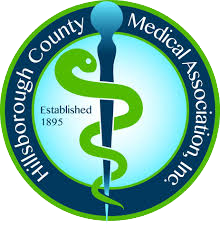 Bone fractures are among the most common injuries among people of all ages—in fact, research says the average person will break a bone twice in their lifetime. Also known as a broken bone, a bone fracture can result from factors like sports injuries, car accidents, osteoporosis, strain from repetitive actions like running, and even simple slips or falls. Bone fractures most often occur in the collarbone (clavicle), followed by the wrist, ankle, hip, forearm, and shinbone.
Bone fractures are among the most common injuries among people of all ages—in fact, research says the average person will break a bone twice in their lifetime. Also known as a broken bone, a bone fracture can result from factors like sports injuries, car accidents, osteoporosis, strain from repetitive actions like running, and even simple slips or falls. Bone fractures most often occur in the collarbone (clavicle), followed by the wrist, ankle, hip, forearm, and shinbone.
Thankfully, the majority of broken bones never require surgical treatment. Bone fractures can often be addressed through the following conservative approaches:
- Immobilization – A cast or splint is used to immobilize the fractured bone and allow it to heal on its own while protecting it from further damage. This treatment is generally used for mild broken bones that didn’t move far out of place. A cast is typically worn for six to eight weeks, while a splint may be used for three to five weeks.
- Closed Reduction – A closed reduction is a nonsurgical procedure that’s done to realign a broken bone. During treatment, a medical professional—usually an orthopedic specialist—manually pushes and pulls the affected area to line up fractured bones and position them for healing. A sedative, local anesthesia, or general anesthesia may be administered prior to a closed reduction.
Surgical Bone Fracture Treatment
Broken bone surgery may be necessary for severe or complex fractures that wouldn’t heal properly through conservative treatments alone. Examples of bone fractures that may require surgical repair include:
- Compound fractures – A compound (open) fracture refers to a broken bone that breaks through the skin and causes a visible deformity. Surgery incorporating hardware devices such as rods, pins, or plates is necessary to reposition the bones and stabilize the area.
- Shoulder fractures – The shoulder is a ball-and-socket joint in which the head of the upper arm bone (the ball) is positioned in the glenoid cavity (the socket) to provide a wide range of motion. Surgery is often required to repair or replace the head of the upper arm bone if it is broken, split, or crushed.
- Hip fractures – The hip is another ball-and-socket joint that facilitates several key movements. When one or more bones of the joint breaks, hip repair (pinning) surgery may be used to stabilize the area with hardware devices, or total or partial hip replacement may be recommended to replace damaged components with specially designed implants.
- Thighbone fractures – A broken thighbone (femur) often requires internal fixation surgery, during which a surgical rod is placed alongside the bone to provide stability and facilitate healing.
Bone Fracture Treatment From Orthopedic Specialists
A division of Florida Medical Clinic, Tampa Orthopaedic & Sports Medicine Group is a trusted provider of broken bone treatment and other specialized orthopedic services in the Tampa Bay area. Contact our friendly team today at (813) 253-2406 or request an appointment online to schedule an appointment with a board-certified specialist. Most major health insurance plans are accepted at our practice, including Medicare and worker’s compensation.












